January 18, 2019ANALYSIS OF NOVA SCOTIA'S CONSUMER PRICE INDEX FOR DECEMBER 2018 In Nova Scotia December 2018, year over year growth for the All-Items Consumer Price Index was 1.6 per cent, below the national average of 2.0 per cent. Monthly consumer prices were down 0.5 per cent in Nova Scotia and down 0.1 per cent nationally.
Within Atlantic Canada, Nova Scotia had the highest year over year consumer price inflation (+1.6%), followed by Prince Edward island (+1.3%) and New Brunswick (+0.9%), then Newfoundland and Labrador (+0.5%).
In December 2018, all provinces experienced positive year over year inflation, the highest in British Columbia (+3.0%).
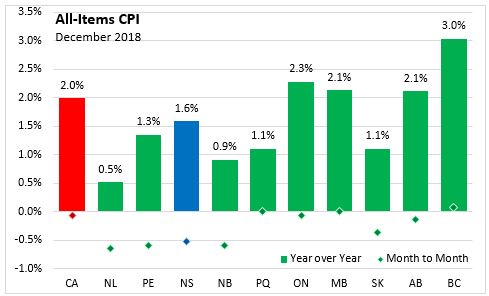
Nova Scotia's consumer price inflation (year over year growth in CPI) excluding food and energy rose 2.2 per cent in December, below the national rate of 2.3 per cent. Price level gains for this index were largest in British Columbia (+3.2 per cent), and lowest in Newfoundland and Labrador (+0.9 per cent). On a monthly basis, Nova Scotia's index excluding food and energy was down 0.2 per cent.
The main contributors to the monthly (December 2018 vs. November 2018) NS CPI movement:
Inter-city transportation (+20.6%)
Fresh Vegetables (+10.0%)
Gasoline (-7.5%)
Traveller accommodation (-19.6%)
The main contributors to the annual (December 2018 vs. December 2017) NS CPI movement:
Inter-city transportation (+26.6%)
Fuel oil and other fuels (+11.0%)
Gasoline (-10.6%)
Traveller accommodation (-18.4%)
The CPI for food in Nova Scotia increased 0.6 per cent year-over-year with a 0.3 per cent increase month-to-month. CPI growth in food (year over year) was up in all provinces, except Newfoundland and Labrador. Ontario showed the highest year over year food price growth (+4.1%). Nationally, annual food prices increased 2.9 per cent.
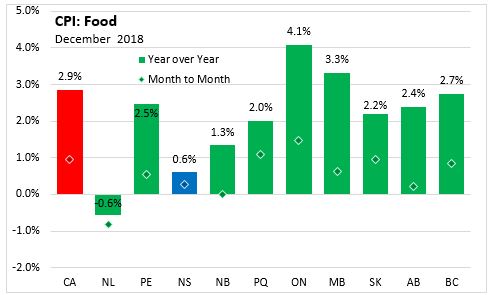
The Nova Scotia energy index decreased by 1.7 per cent compared to a year ago. Energy price declined the most in Ontario (-7.5 per cent) on a year over year basis, and had the largest growth in Alberta (+2.2%). Nationally, the index was down 3.7 per cent.
Year over year, the consumer price index for shelter increased by 3.1 per cent in Nova Scotia and 2.2 per cent in Canada.
Major Components for December 2018
The following table shows the price increases specific to Nova Scotia for the major components of the CPI this month:
Long Run Trends
The All-Items CPI year over year inflation rate for Nova Scotia was below Canada's in December 2018. Nova Scotia's annual inflation has remained below the Canadian average since mid-2014, with the exception of only a few months. While month to month movements in the indices can be different, over time they generally follow the same overall trend.
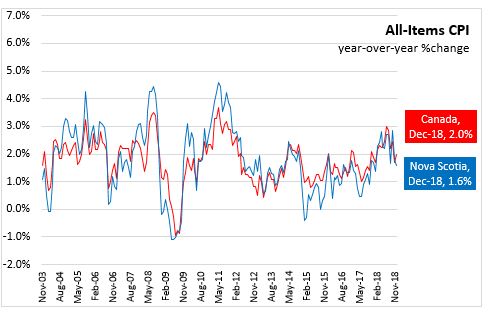
Annual inflation for the CPI excluding food and energy was lower for Nova Scotia (at 2.2 per cent) compared to Canada in December.
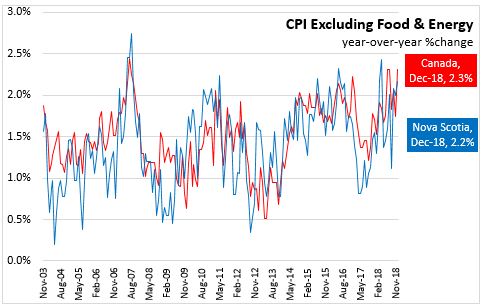
Bank of Canada's preferred measures of core inflation
Compared with December 2017, CPI-Trim and CPI-Common rose 1.9 per cent and CPI-median was up 1.8 per cent in Canada. All-items CPI excluding eight of the most volatile components as defined by the Bank of Canada and excluding the effect of changes in indirect taxes (formerly referred to as CPIX) rose 1.7 per cent year over year in December 2018.

Appendix Tables and Charts
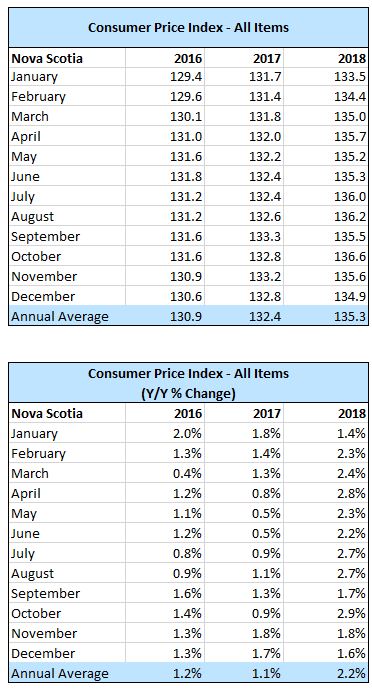
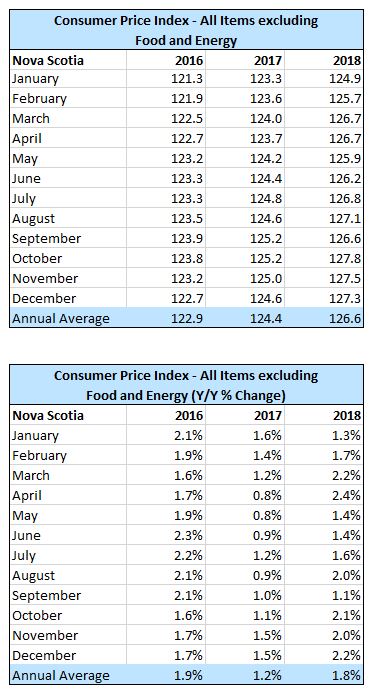
Source: Statistics Canada data portal: Tables 18-10-0004-01 and 18-10-0256-01